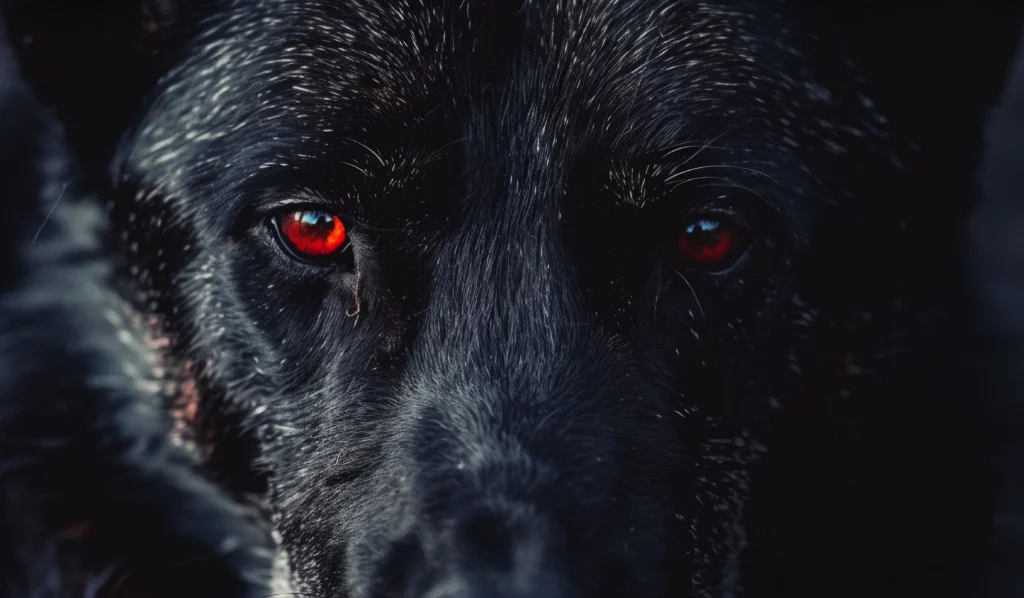Dogs have long captivated humans with their expressive eyes, capable of conveying emotions ranging from boundless joy to quiet curiosity. But have you ever paused to consider just how varied their eye colors can be? While deep brown dominates the spectrum, a few exceptional hues set certain dogs apart. Among these, one color reigns supreme in rarity. Let’s dive into the fascinating realm of canine eye colors and discover the elusive shade that tops the list.
Common Eye Colors in Dogs
The world of dog eye colors is rich and varied, but most pups sport brown or amber hues. These tones are not just beautiful; they are deeply tied to a dog’s genetics and coat color. For instance:
- Brown Eyes: The default shade for most dogs. Labrador Retrievers and Golden Retrievers, with their warm brown eyes, exemplify this classic look.
- Amber Eyes: A lighter, golden variant often seen in Weimaraners and certain hounds. This color exudes an elegant, almost regal charm.
Blue eyes, though less common, are an unmistakable feature in breeds like the Siberian Husky and Australian Shepherd. Their icy gaze has an almost mystical quality, making them particularly memorable.
Still, these common shades pale in comparison to rarer tones like green. The genetics behind these hues paint an intriguing picture of canine diversity.
The Rarest Eye Color for Dogs: Green
Green eyes in dogs are almost mythical in their rarity. Unlike humans, where green eyes are uncommon but not unheard of, this shade is a true anomaly in the canine world. Dogs with green eyes are typically products of unique genetic combinations that influence pigmentation.
One notable example? The American Pit Bull Terrier. Particularly those with dilute or merle coat patterns can sometimes exhibit this striking shade. The allure of green eyes lies in their chameleon-like quality—shifting subtly under different lighting conditions, mesmerizing all who behold them.
The Science Behind Green Eyes
To understand why green eyes are so rare, it’s essential to explore the science of pigmentation. Eye color is dictated by the iris’ pigmentation and the scattering of light. The key player here is melanin, the pigment responsible for skin, hair, and eye color.
- Dogs with high melanin levels typically have brown eyes.
- Lower melanin levels result in lighter shades like blue or amber.
For green eyes, the situation becomes even more complex. They arise from an uncommon balance of low melanin levels and light-scattering effects, combined with specific genetic markers that are exceptionally rare in dogs.
Puppies and Eye Color Transformation
Many dog owners have witnessed this fascinating phenomenon: a puppy born with blue or light-colored eyes that gradually darken over time. This change occurs as melanin production ramps up in the iris. However, for a dog to retain green eyes into adulthood, their genetics must counteract this natural darkening process—a truly rare occurrence.
Beyond Green: Other Unique Eye Colors
While green takes the crown, other eye colors add to the kaleidoscope of canine diversity. Let’s explore some of these striking variations:
- Heterochromia: Dogs with heterochromia boast two differently colored eyes—for instance, one blue and one brown. Breeds like the Australian Shepherd and Siberian Husky are famous for this trait.
- Parti-Colored Eyes: A single eye with multiple hues, often seen in merle-coated breeds such as the Catahoula Leopard Dog, creates a dazzling mosaic effect.
- Yellow Eyes: Distinctly golden and less common than amber, this shade adds a wild, primal touch to breeds like the Pharaoh Hound and Vizsla.
Breeds Known for Unique Eye Colors
Certain breeds are predisposed to rare and unusual eye colors. Let’s spotlight a few:
- Siberian Husky: Renowned for their piercing blue eyes, Huskies often exhibit heterochromia or parti-colored eyes.
- Australian Shepherd: This breed’s eye colors range from amber to blue and, in rare cases, green.
- Weimaraner: Known for their silver-gray coats and matching grayish-blue eyes.
- Catahoula Leopard Dog: Their merle patterns often coincide with striking eye variations, including parti-colored eyes.
- American Pit Bull Terrier: Among the few breeds where green eyes occasionally appear, particularly in dilute or merle individuals.
Caring for Dogs with Rare Eye Colors
Dogs with light-colored or unique eyes, such as green or blue, often have heightened sensitivity to sunlight. Their lighter irises allow more light to penetrate, potentially causing discomfort or strain. Here’s how to protect your pup:
- Provide Shade: Ensure they have access to shaded areas, especially during outdoor activities.
- Use Protective Gear: Dog sunglasses or goggles can shield sensitive eyes from excessive sunlight.
- Schedule Regular Vet Checkups: Uncommon eye colors can sometimes correlate with genetic conditions. Regular checkups help maintain optimal eye health.
- Monitor Changes: Sudden changes in eye color or appearance, such as cloudiness or redness, warrant a vet visit.
The Role of Genetic Testing
Curious about what makes your dog unique? Genetic testing can reveal fascinating insights about your dog’s lineage and traits, including eye color. Services like Embark and Wisdom Panel offer comprehensive reports, helping you uncover the secrets behind your pup’s rare features.
Why Eye Color Matters
Beyond aesthetics, a dog’s eye color offers clues about their genetic history and breed characteristics. For breeders, understanding these genetic nuances ensures responsible practices and helps preserve rare traits.
Celebrating Canine Uniqueness
Every dog’s eyes tell a story. Whether it’s a deep brown gaze full of warmth, icy blue eyes radiating mystery, or the elusive green that feels almost otherworldly, each pair is a testament to the incredible diversity of man’s best friend. By cherishing and caring for these traits, we strengthen the bond with our furry companions.
Learn More
To dive deeper into the world of dog genetics and traits, check out resources like the American Kennel Club or PetMD. These platforms provide invaluable information for dog owners and enthusiasts alike.
Conclusion
Green eyes are a rarity that epitomizes the diversity and beauty of the canine world. Exploring the genetics and history behind dog eye colors reveals an intricate tapestry of science and wonder. So whether your dog boasts rare green eyes or a classic brown gaze, their eyes are truly windows to a unique soul—one that brightens your life every single day.



